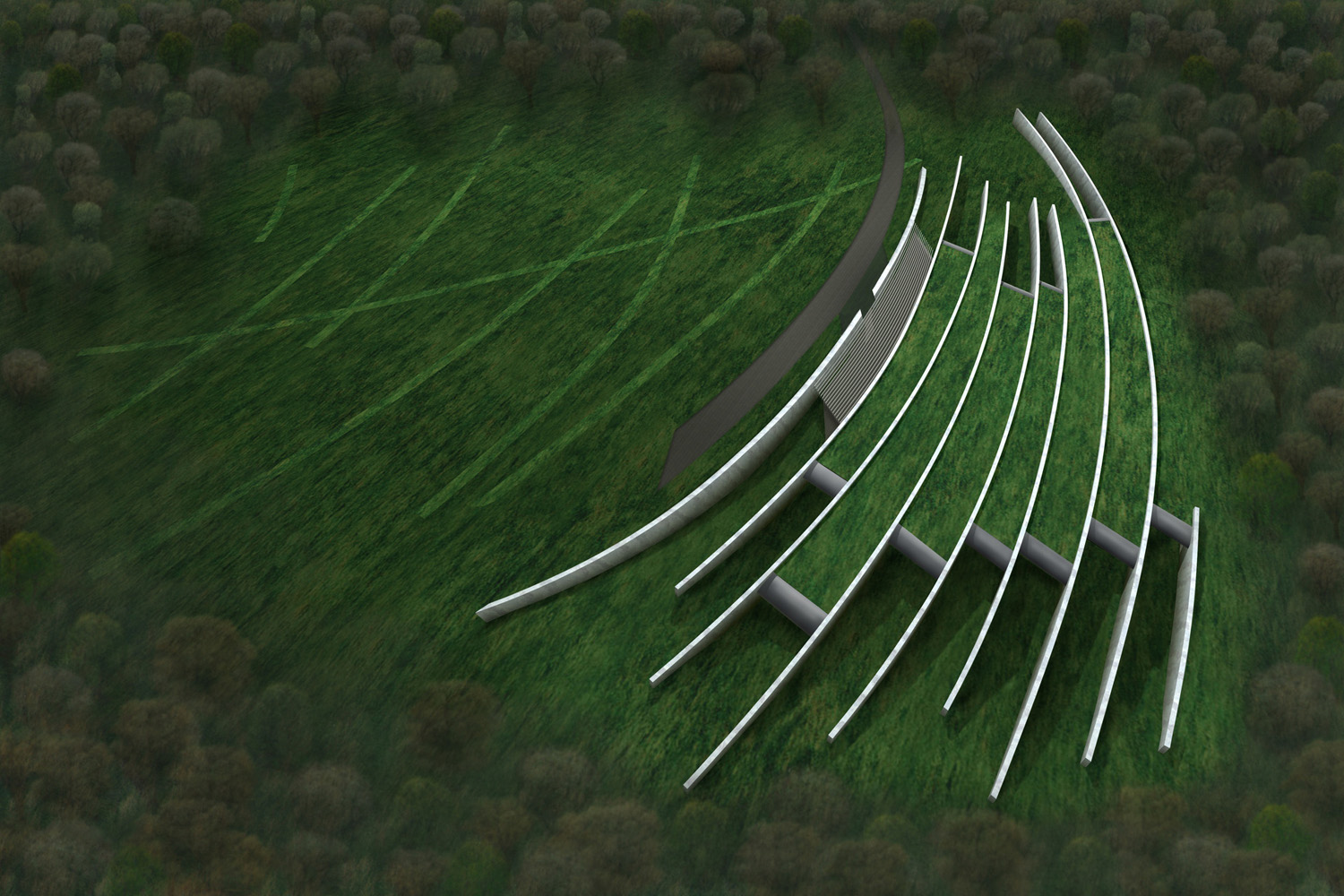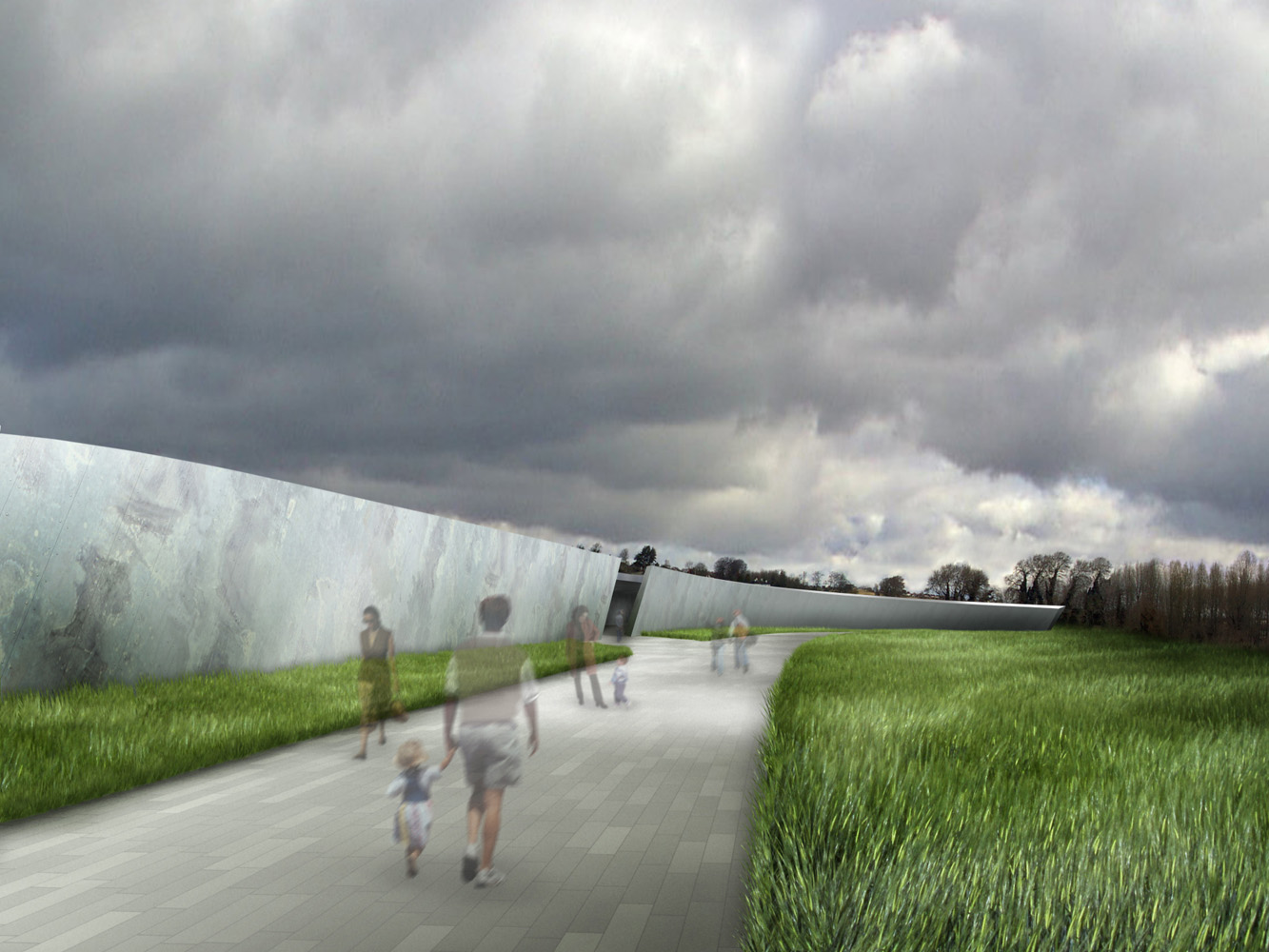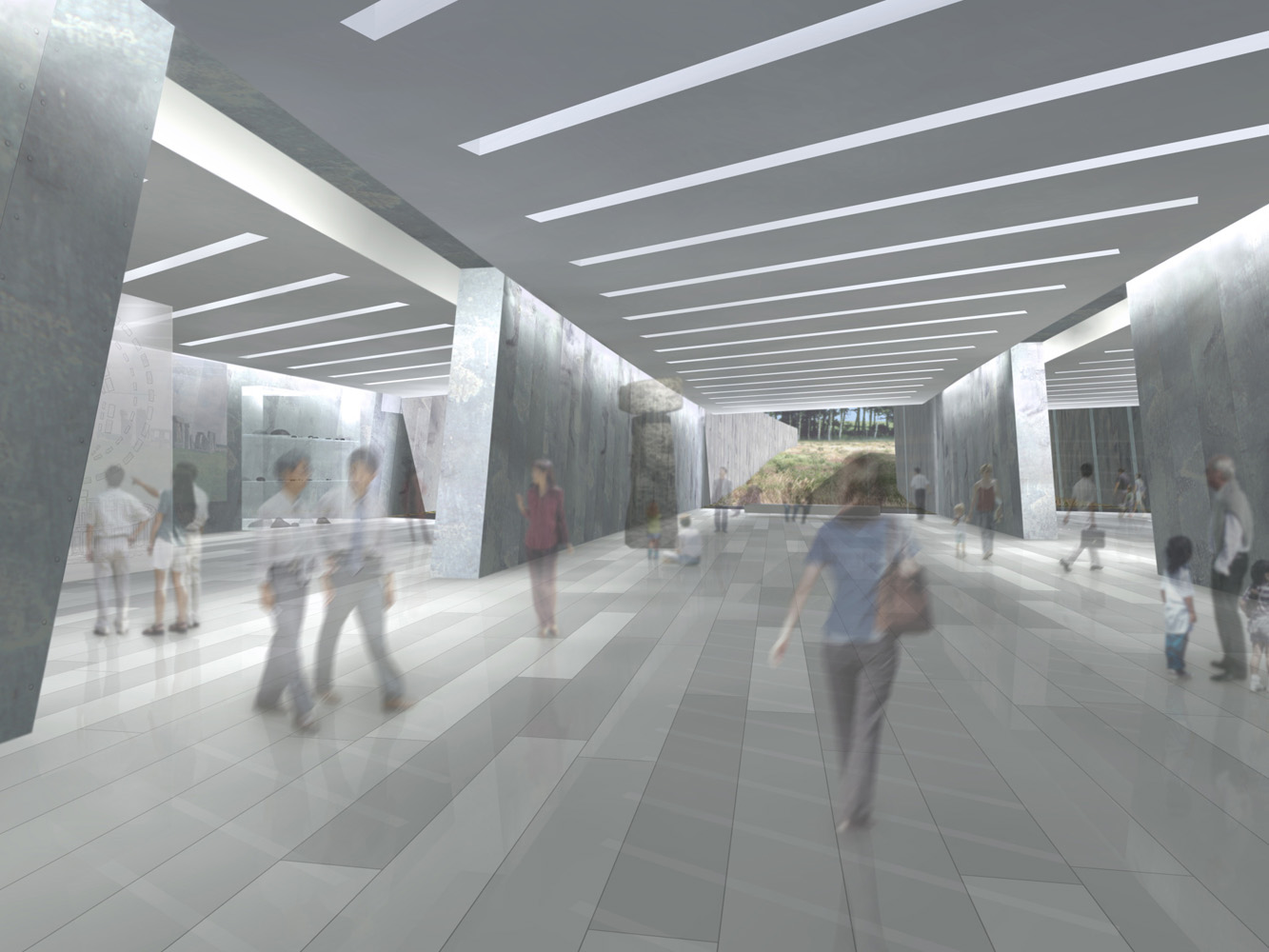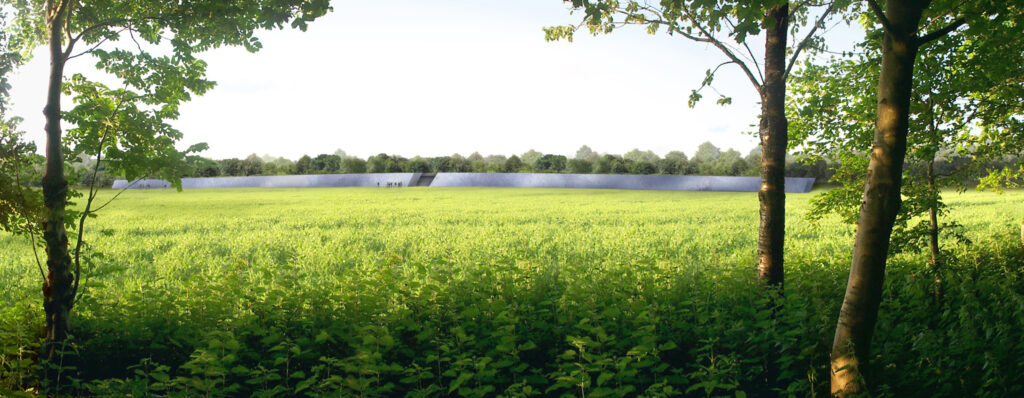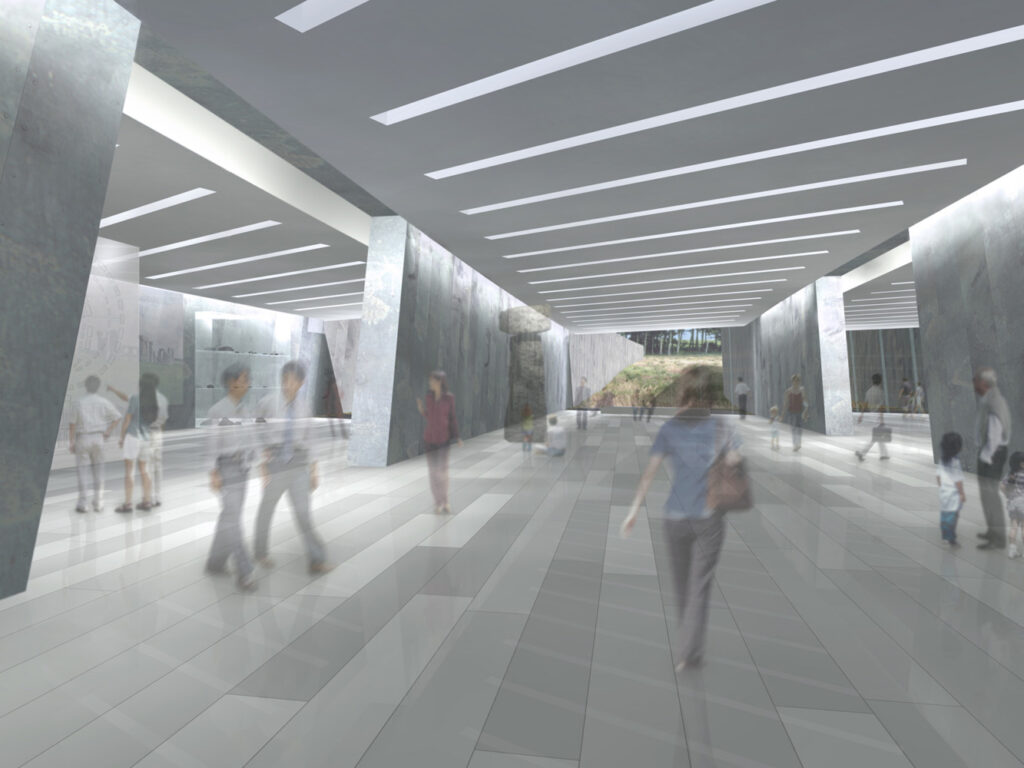Stonehenge Exhibition + Visitor Centre Competition
Wiltshire, United Kingdom
English Heritage
Design Competition 2008
Denton Corker Marshall was appointed by English Heritage to design the interpretive centre for Britain’s best known ancient monument.
The 28 hectare site, located three kilometres east of Stonehenge, was to be the principal entry point, while the visitor centre was conceived as an abstract form embedded in, and at one with the landscape. On the edge of an open field it appears as a long sweeping wall, marked only by a single break, through which entry occurs.
Beyond the wall, a series of similar planes slide into the landscape. These curved forms read as powerful seams or layers extruded out of the earth. They are metal clad; huge billets of pewter-toned burnished metal, establishing an image of solidity, strength and timelessness without recourse to stone or concrete, or direct association with Stonehenge.
This first design, even with extensive documentation and full Planning Approval, could not proceed due to post-GFC removal of funding for associated road and tunnel infrastructure.
